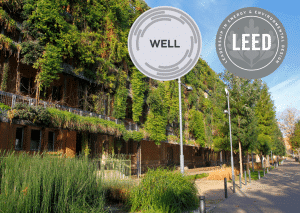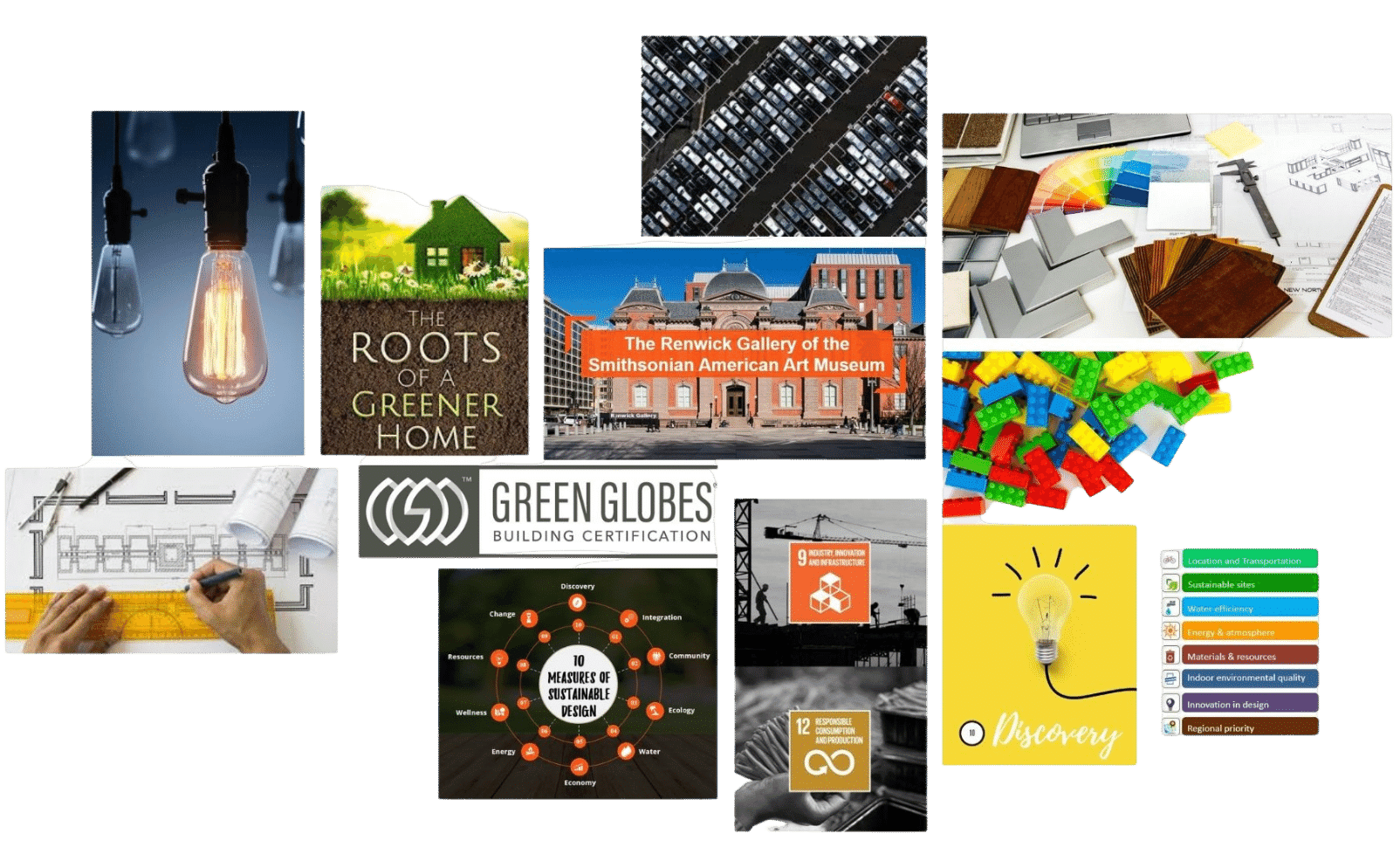Splitting Up is Hard to Do: Nuclear Fission and Renewable Energy
Splitting up is hard to when talking about nuclear fission, but so is coming back together in nuclear fusion. They are two different processes, but both of them are used for generating nuclear power. The common question is: Are these processes considered renewable or non-renewable as energy sources? In the following sections, nuclear fission and nuclear fusion are defined and compared for reference. Beyond that, the discussion focuses on nuclear fission as the main source of energy in U.S. nuclear reactors, and its future within the nuclear power and renewable energy industries.
What are Nuclear Fission and Nuclear Fusion?
Though nuclear fission and nuclear fusion are both physical processes that produce energy from atoms, they are different types of reactions. The underlying basic principle in both processes is the manipulation of atomic bonds between particles in atoms. The difference lies in how the atomic bonds are managed.
Nuclear Fission: Turning One into Many
Nuclear fission is the splitting of a heavy, unstable atom nucleus into two or more smaller lighter nuclei. It is a process that has been found to occur in nature, but rarely. Oklo is the only known natural nuclear reactor per the International Atomic Energy Agency.[1]
The type of environment needed for nuclear fission includes the critical mass of the right substance, which in this case is enriched uranium, and the presence of high-speed neutrons. The atomic bomb is a nuclear fission bomb, but the difference between it and a nuclear reactor is that the chain reaction in the atom bomb is uncontrolled, while the nuclear reactor chain reaction is controlled.
As a refresher, all matter is made up of atoms, and an atom consists of a central nucleus with a positive charge, surrounded by orbiting electrons with a negative charge. The nucleus is dense and makes up most of the atom’s mass. The nucleus is constructed of smaller particles called protons and neutrons. Protons have a positive charge, and neutrons are neutral (carry no net charge).
When Fission Occurs
Fission occurs when a neutron is slammed into a larger atom. When using uranium as the material, the uranium nuclei is as big as it can get, so introducing one more neutron interferes with the balance of positive and negative forces. The strong nuclear force gets weaker, and the diameter of the nucleus gets bigger, but the electrostatic repulsion from the positively charges protons in the nucleus lose very little strength despite the growing distance. The nuclei gets bigger and bigger until the strong nuclear force can no longer hold the nucleons to each other. The atoms at this limiting size would be the largest found in nature, and this describes uranium. Uranium gets one neutron heavier and does not want to shed energy by releasing radioactivity. It gets so unstable it breaks into pieces (fission).[2]
Fissioning a uranium nucleus is the process of releasing the stress holding a uranium nucleus together. During this process, energy is released and some mass is lost. When uranium atoms fission, 2-3 more neutrons are also emitted. These are the neutrons that create the critical chain reaction of released energy. More uranium nuclei fission as a result of collisions with neutrons. Energy shows up as heat, and that is what powers the nuclear power reactors.
In summary, the force of the neutron collision excites the atom and splits it into two smaller atoms which are called fission products. At the same time, additional neutrons are released that start a chain reaction. In the nuclear reactor, the first neutron comes from the uranium fuel or another source like Cf-252 (californium is a radioactive isotope of the californium element and able to emit neutrons).
Moderators Slow Down Neutrons
The uranium nucleus contains over 230 protons and neutrons. The neutron particle can enter a positively-charged nucleus at will with almost no energy, since there is nothing to repel it. If the nucleus absorbs the neutron, it becomes heavier, which makes it unstable. In an attempt to restore stability, energy is emitted from the nucleus which is radioactive decay or radioactivity. Around the time of World War II, scientists discovered they could bombard uranium with neutrons which made heavier atoms and caused some atoms to split in half. The term “fission” was used to describe the process.
Since some fraction of the fission energy is gamma radiation, and various types of radiation are emitted by the two remaining pieces of the uranium (fission products), nuclear reactors and the discharged fuel need shielding. During the fission event in the nuclear reactor, neutrons are traveling too fast to initiate the number of new fission events needed to produce the desired energy. In the nuclear reactor, they are slowed down to a couple of km per second using a moderator. A moderator per the U.S. Nuclear Regulatory commission is “A material, such as ordinary water, heavy water, or graphite, that is used in a reactor to slow down high-velocity neutrons, thus increasing the likelihood of fission.”[3]
All commercial U.S. nuclear reactors use ordinary water (light water).[4] Heavy water is used in other countries, with Canada and India being the top users. Heavy water is water made of molecules that contain two hydrogen atoms and one oxygen atom, like ordinary water, but each hydrogen atom has a neutron and a proton in the nucleus. Light water hydrogen molecules have only one proton. The hydrogen isotope is called deuterium, and heavy water is deuterium oxide (D2O).
Enriched Uranium
There are two types of uranium. One is U235 which has 92 proteins and 143 neutrons. There is also U238 which has 92 proteins and 146 neutrons. The difference in nuclei of an element are the isotopes. U235 makes up, by far, the lesser amount of uranium, but accounts for most fissions in a nuclear reactor. Nuclear reactors using heavy water can use U238 uranium. Nuclear reactors using light water must use enriched uranium or uranium converted into plutonium (PLu239). The U.S. produces heavy water for military use, but as mentioned, Canada and India rely on heavy-water nuclear plants.[5]
The light water nuclear reactors need a higher concentration of the U235 isotope than found in natural uranium ore. So U235 is concentrated (enriched) to make it fissionable. The U235isotope is enriched to 3-5 percent as opposed to the .7 percent that naturally exist.[6]
The hydrogen nuclei in water collides with the neutrons, each about the same size, and slows them down. Two objects of similar size colliding leads to a high energy loss per collision. When atoms are split, an exceptionally high amount of energy is released. In fact, the energy released during nuclear fission is a million times greater than the energy released in chemical reactions.
Nuclear Fusion: Turning Lighter into Heavier
Nuclear fusion is the fusing of two or more smaller or lighter nuclei (low-mass isotopes) into a larger heavier one. For example, two hydrogen atoms are fused to form a helium atom. It does occur in nature, such as in stars, including the sun. In fact, fusion is the process powering the sun which gives a vivid picture of the enormous amount of energy nuclear fusion can release. The environment for nuclear fusion to occur requires high density and high temperature. Unlike nuclear fission, extremely high energy is required to bring two or more protons close enough to overcome the natural electrostatic repulsion. The energy released is 3-4 times greater than the energy released by fission. The hydrogen bomb uses a fission process to set off a fusion reaction.[7]
Nuclear fusion is not used in nuclear reactors because of the enormous energy requirements. It is being researched for use in the future because it is an environmentally sound source of energy. Nuclear fusion uses hydrogen and lithium as fuel sources which are more widely available. It also does not produce long-lived radioactive nuclear waste. Instead, it produces the inert gas helium and tritium which is radioactive, but has a short half-life. Moreover, it cannot cause a nuclear accident because it is not based on a chain reaction. This discussion could appear under the section on the future of nuclear reactor technologies because a prototype of the fusion reactor will be built by the year 2040.[8]
Renewable or Non-Renewable?
Fission produces highly radioactive fission byproducts as used nuclear fuel when used in nuclear energy production. The byproducts are actually unstable atomic nuclei which is radioactive material.
Nuclear energy is considered both a renewable and non-renewable energy source because the material (uranium) used to generate nuclear power is not renewable, and it produces highly radioactive spent fuel. As explained, the most common material used in nuclear power plants is U235uranium, a relatively rare non-renewable resource. The other fission byproduct is radioactive waste that includes anything that came into contact with the radioactive dust.
Fission is a non-renewable energy source, but the nuclear reactor does not emit greenhouse gases.
Advancing Nuclear Fission Technologies
Some scientists believe nuclear fusion could conceivably become a major process for producing nuclear energy in the next 5-20 years. It will increase energy output and significantly reduce radioactive waste. For now, the focus is on continuing to use nuclear fission, but develop advanced nuclear reactors that are more fuel efficient, produce less radiation and are more affordable.
Advanced Small Modular Reactors
Advanced Small Modular Reactors (SMRs) are under development in the U.S. The SMRs can produce up to 300 MWe (one million watts of electric capacity) or the equivalent. They are a nuclear power option that requires less frequent refueling, approximately 3-7 years compared to 1-2 years for large conventional nuclear reactors.[9]
The SMR offers other anticipated advantages, such as being able to more readily establish them on brownfield sites where coal-fired plants are decommissioned. The World Nuclear Association lists the features of SMRs, and one of them is the fact the lower power generation leads to a reduction of the source term and produces a smaller radioactive inventory.[10] NuScale received the first U.S. Nuclear Regulatory Commission design approval for an SMR in September 2020.[11],[12]
Integral Molten Salt Reactor
Another radical design in nuclear fission technology is the Integral Molten Salt Reactor (IMSR), being prep tested by TerraPower and its partners. Molten salt is the coolant and fuel, as opposed to water circulating through a highly pressurized cooling system and the solid fuel. Fission power is produced in a circulating molten salt fuel mixture which is a mixture of sodium, zirconium, and uranium fluorides.[13]
Liquid chloride salts flow through the reactor core which allows the fission to directly heat the salts. The mixture is circulated through a heat exchanger in a subsequent loop that is used to process heat or for electricity storage or thermal storage. It can use multiple fuels for operation which include depleted and natural uranium or spent fuel, meaning it can consume waste from other nuclear reactors.[14]
Molten salt is thermally stable which enables lower pressure and high temperature operation. Molten salt coolant and molten salt fuel are used in combination and can generate 195 megawatts of electricity. The system is a graphite-moderated, thermal-spectrum, molten-fluoride-salt reactor system. It uses standard nuclear fuel – standard-assay low-enriched uranium which is less than 5-percent U235.[15]
Molten Chloride Fast Reactor
The Molten Chloride Fast Reactor (MCFR) is another new nuclear reactor technology and a variation of the molten salt reactor. It is being developed by TerraPower and Southern Company. Molten chloride salt fuel is the fuel and coolant in the reactor core. The difference is the MCFR design focuses on fast neutron spectrum as opposed to thermal neutron spectrum used in other salt reactors. The MCFR can operate in higher temperature regimes, so it can do more than generate electricity. It also can provide carbon-free heat for industrial processes and thermal storage.[16],[17],[18]
A conventional nuclear plant is called a light-water nuclear reactor because water absorbs the heat and becomes steam. The steam then spins a turbine to produce carbon-free electricity. One of the safety issues is that steam can create pressure inside a reactor. The MCFR uses liquid sodium as a cooling agent because it has a higher boiling point and can absorb more heat compared to water. The high pressure does not build up in the reactor, making it safer. The advanced nuclear reactors produce less waste because radioactive uranium fuel is used more efficiently.[19]
Nuclear Fission Concerns Persist
The arguments against nuclear power usually begin with what to do with spent nuclear fuel and radioactive waste. The new technologies still need uranium235, which is rare, and still use nuclear fission. This means there will be radioactive material to dispose of in a safe manner. That is enough for opponents of nuclear reactors to remain opposed, no matter how small the reactors get or how little radioactive spent fuel or waste produced.
There are other objections on the list, including the falling cost of renewable energy systems, such as solar, compared to the continued high cost of designing and building nuclear reactors. Most energy produced by humans has come from physical and chemical processes, like burning carbon-based materials including coal, wood or gas. Yet, each year there is growing use of power generated by the sun, water, and wind. Why invest in an energy production plant that produces byproducts harmful to humans?
The proponents of the new technologies in nuclear fission reactors see developments like advanced SMRs, IMSRs, and MCFRs as the way forward for safe and affordable nuclear power. The smaller power plants are less likely to overheat, are easily transported, and cost less to build and install, to name a few advantages. Developers anticipate they could contribute to managing greenhouse gases while bringing energy sources to rural and disadvantaged populations. Furthermore, the new nuclear fission technologies are safer.
In a traditional nuclear reactor, if the cooling water is lost, the fission process shuts down which can lead to higher temperatures and a core meltdown. This is what happened during the 2011 Fukushima nuclear disaster in Japan. The plant cleanup is expected to take approximately 30 years. Even after the reactor in the large nuclear reactor plant is shut off, the heat from radioactive decay is enough to lead to a core meltdown.
The new NuScale design of advanced SMRs have relief valves built into the design. They open when power is lost, and steam is released into the vessel. The steam condenses, recirculates, and provides cooling without needing pumps.[20] It is a “walk away” system with the reactor automatically shutting down and remaining cool. There would be no fear of a meltdown and the release of large amounts of radioactive materials.
The future of nuclear power truly hinges on the new technologies under development. Yet, there are no guarantees that any of them will pan out. If they do, how people think of nuclear fission and nuclear reactors could radically change.
Refeerences
[1] https://www.iaea.org/newscenter/news/meet-oklo-the-earths-two-billion-year-old-only-known-natural-nuclear-reactor
[2] http://www.nuclearfaq.ca/cnf_sectionA.htm#fission
[3] https://www.nrc.gov/reading-rm/basic-ref/glossary/moderator.html
[4] https://www.energy.gov/ne/articles/nuclear-101-how-does-nuclear-reactor-work
[5] https://www.pbs.org/wgbh/nova/hydro/water.html
[6] https://www.nrc.gov/materials/fuel-cycle-fac/ur-enrichment.html
[7] https://chem.libretexts.org/Bookshelves/Physical_and_Theoretical_Chemistry_Textbook_Maps/Supplemental_Modules_(Physical_and_Theoretical_Chemistry)/Nuclear_Chemistry/Fission_and_Fusion/Contrasting_Nuclear_Fission_and_Nuclear_Fusion
[8] https://www.iaea.org/topics/energy/fusion/faqs
[9] https://www.iaea.org/newscenter/news/small-modular-reactors-a-challenge-for-spent-fuel-management
[10] https://www.world-nuclear.org/information-library/nuclear-fuel-cycle/nuclear-power-reactors/small-nuclear-power-reactors.aspx
[11] https://www.energy.gov/ne/articles/nrc-approves-first-us-small-modular-reactor-design
[12] https://www.nuscalepower.com/
[13] https://factsheets.inl.gov/FactSheets/molten-salt-reactor.pdf
[14] https://www.energy.gov/ne/articles/southern-company-and-terrapower-prep-testing-molten-salt-reactor
[15] https://www.terrestrialenergy.com/technology/molten-salt-reactor/
[16] https://www.terrapower.com/our-work/molten-chloride-fast-reactor-technology/
[17] https://www.terrapower.com/wp-content/uploads/2021/04/TP_2021_MCFR_Technology.pdf
[18] https://www.terrapower.com/benefits-molten-chloride-fast-reactor-technology/
[19] https://www.cnbc.com/2021/04/08/bill-gates-terrapower-is-building-next-generation-nuclear-power.html
[20] https://www.bbc.com/future/article/20200309-are-small-nuclear-power-plants-safe-and-efficient
















